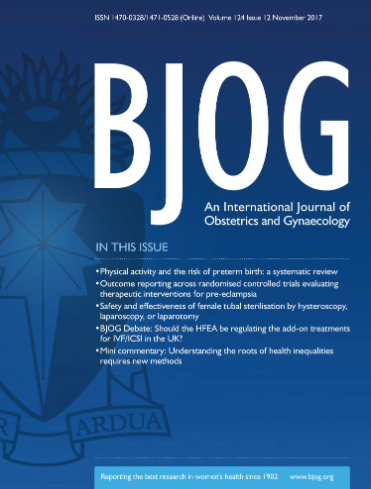Twelve-Year Follow-Up of a Randomised Controlled Trial Comparing the Effectiveness of Pelvic Floor Muscle Training Versus Mid-Urethral Sling Surgery for Female Moderate to Severe Urinary Incontinence
Abstract
Objective
To compare the 12-year effectiveness of pelvic floor muscle training versus midurethral sling surgery for moderate to severe female stress urinary incontinence.
Design
Observational follow-up study of a randomised controlled trial.
Setting
Conducted at the Division of Gynaecology, University Medical Centre Utrecht, The Netherlands.
Population
Women from the PORTRET study experiencing moderate to severe stress urinary incontinence.
Methods
A validated questionnaire was sent to participants.
Main Outcome Measures
The primary outcome was subjective improvement in urinary incontinence symptoms. Secondary outcomes included subjective cure, severity of incontinence, impact of incontinence as urogenital symptom and cross-over and re-operation rates.
Results
In this long-term study, 184 of 386 (47.7%) women responded to the questionnaire. Cross-over (86.9%) from the initial physiotherapy group to surgery was very high. No statistically significant differences were found in the intention to treat analysis. However, the post hoc analysis showed that women who underwent physiotherapy only reported a statistically significant lower improvement compared to those who underwent initial surgery (50.6% absolute difference; 95% CI 28.2–73.1) or surgery after physiotherapy (49.7% absolute difference; 95% CI 25.8–73.7). Subjective cure, decrease in perceived severity and impact of urinary incontinence also statistically significantly favoured women who underwent (initial) surgery Re-operation was reported by 4.6% of women.
Conclusion
This 12-year follow-up study showed a very high cross-over rate to surgical treatment, considering a substantial proportion of non-responders. Midurethral sling surgery, either initial or after physiotherapy, statistically significantly improved subjective outcomes for moderate to severe stress urinary incontinence as compared to pelvic floor muscle physiotherapy only in the long-term.


 求助内容:
求助内容: 应助结果提醒方式:
应助结果提醒方式:


